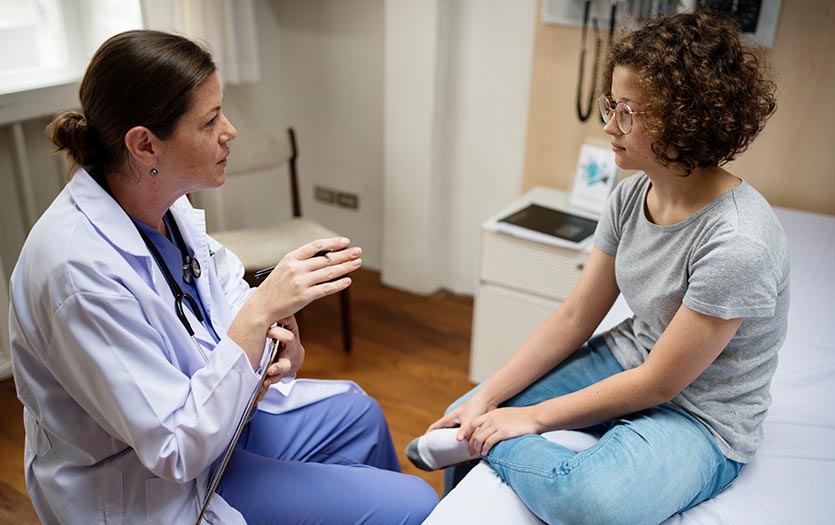
This post was written by Jennifer Rechter, MSN, RN-BC, AG-CNS, sepsis coordinator, Janette Richardson, MSN, RN, AGCNS-BC, CCRN, and Andrea Conley, MSN, RN, AGCNS-BC, MSCRN.
Did you know that sepsis is considered a global healthcare problem? It takes more lives every year than cancer and occurs more frequently than heart attacks. With September being National Sepsis Awareness Month, it’s the perfect time to increase your knowledge and awareness on sepsis. Learning more about this public health issue is one way you can do your part to support the effort and save lives.
What is sepsis?
Sepsis is the body’s overwhelming and potentially life-threatening response to an infection, which can lead to tissue damage, organ failure and even death. Any infection can lead to sepsis, but the four most common are lung, urinary tract, skin and gastrointestinal tract infections.
Who is at risk for sepsis?
Sepsis can affect anyone, but according to the Centers for Disease Control and Prevention (CDC), some populations are at a higher risk, including:
- Adults age 65 and older
- People with chronic medical conditions, such as diabetes, lung disease, cancer and kidney disease
- People who survived sepsis
- People with weakened immune systems
- People with recent severe illness or hospitalization
- Children younger than one
What are the signs and symptoms?
Unfortunately, there is no single sign or symptom of sepsis because it can occur from any infection. However, the most common indications of an infection are diarrhea, vomiting and a sore throat. Those suffering from sepsis might also experience the following symptoms, which are an acronym for SEPSIS.
- S = Shivering, fever, feeling very cold
- E = Extreme pain or feeling worse than ever
- P = Pale or discolored skin
- S = Sleepiness, difficulty waking up, confusion
- I = I feel like I might die
- S = Shortness of breath
If you have any of the above symptoms in addition to an infection, you should seek immediate medical care. Acting fast and getting prompt medical attention is critical when sepsis is suspected.
How can you prevent sepsis?
Sadly, there is no single way to prevent sepsis, but there are many things you can do to reduce your risk of developing it, including:
- Get vaccinated. Flu, pneumonia, COVID-19 and other infections can lead to sepsis, so it is very important that you protect yourself. Talk with your healthcare provider for more information on vaccinations.
- Be thorough. Practice good hygiene like proper handwashing, teeth brushing and regular bathing. If you have scrapes or wounds, properly clean and follow treatment recommendations. If you notice any delays in healing, seek medical care.
- Be vigilant. If you have an infection, be aware of any potentially concerning signs like fever, chills, increased breathing and heart rate, confusion and disorientation.
Why is proper oral care important?
Practicing good oral hygiene is crucial to preventing dental infections that could lead to sepsis. By cleaning your mouth at least twice a day, you’ll not only remove plaque to prevent cavities but will also remove any bacteria that is forming in your mouth. This is an important step, especially if you are hospitalized, as it can reduce your risk of developing pneumonia, which is the most common cause of sepsis.
What is Parkview doing to reduce your risk of sepsis?
Parkview is committed to ongoing sepsis and oral care work to help ensure patients are getting the best care possible. Through the steps we have taken, we have seen an increase in the number of sepsis diagnoses and a reduction in mortality and hospital length of stays for sepsis patients.
- Early detection of sepsis. In January 2019, the Sepsis Task Force team, in collaboration with the Business Intelligence-Analytic team, implemented the “Early Detection of Sepsis” predictive model to help healthcare providers with early detection and intervention for sepsis patients. With this model, healthcare providers are alerted when a patient reaches a certain threshold score based on their temperature, respiratory rate, heart rate, blood pressure and more. If there are any concerns for sepsis, providers have a protocol to follow to better care for the patient.
- Decrease variations in sepsis care. Through collaboration with the Care Design and Optimization team, the Sepsis Task Force continues to work on processes to decrease variations in care and improve patient outcomes for sepsis patients at Parkview.
- Sepsis surveillance. In 2020, Parkview implemented a sepsis surveillance nurse program that assists with early recognition and identification of sepsis, reduced sepsis practice alert fatigue for nurses, identifying subtle changes in sepsis patients and allowing for extra monitoring for those at-risk.
- Oral care guidelines. A multidisciplinary team came together to better meet the oral care needs of patients throughout Parkview. They reviewed and implemented new products and developed an oral care guide to show how and what products should be used for hospitalized patients. They also provided education on how to provide proper oral care to all patients.
Help us celebrate Sepsis Awareness Month by doing your part to share and broadcast the sepsis message of “See is. Stop it. Survive it.” This message focuses on the importance of being able to recognize symptoms and seek treatment quickly like we do for heart attacks and stroke.



